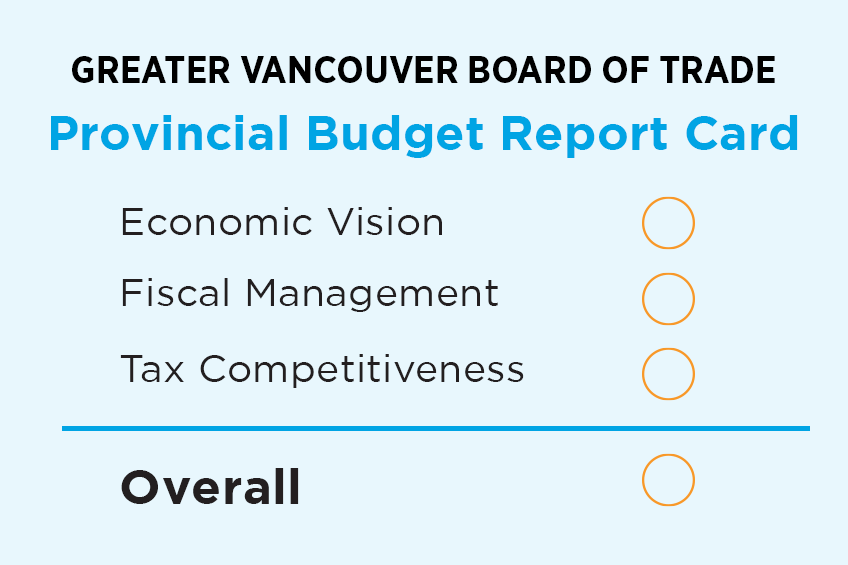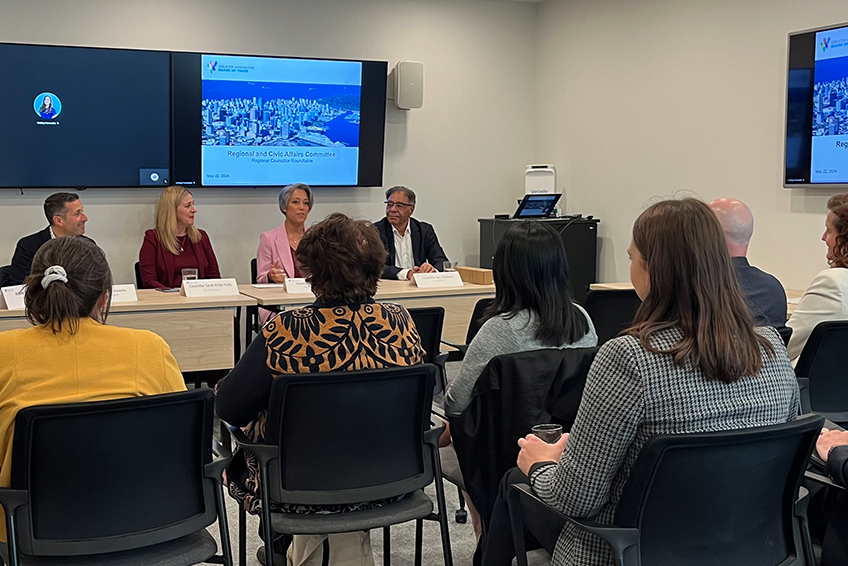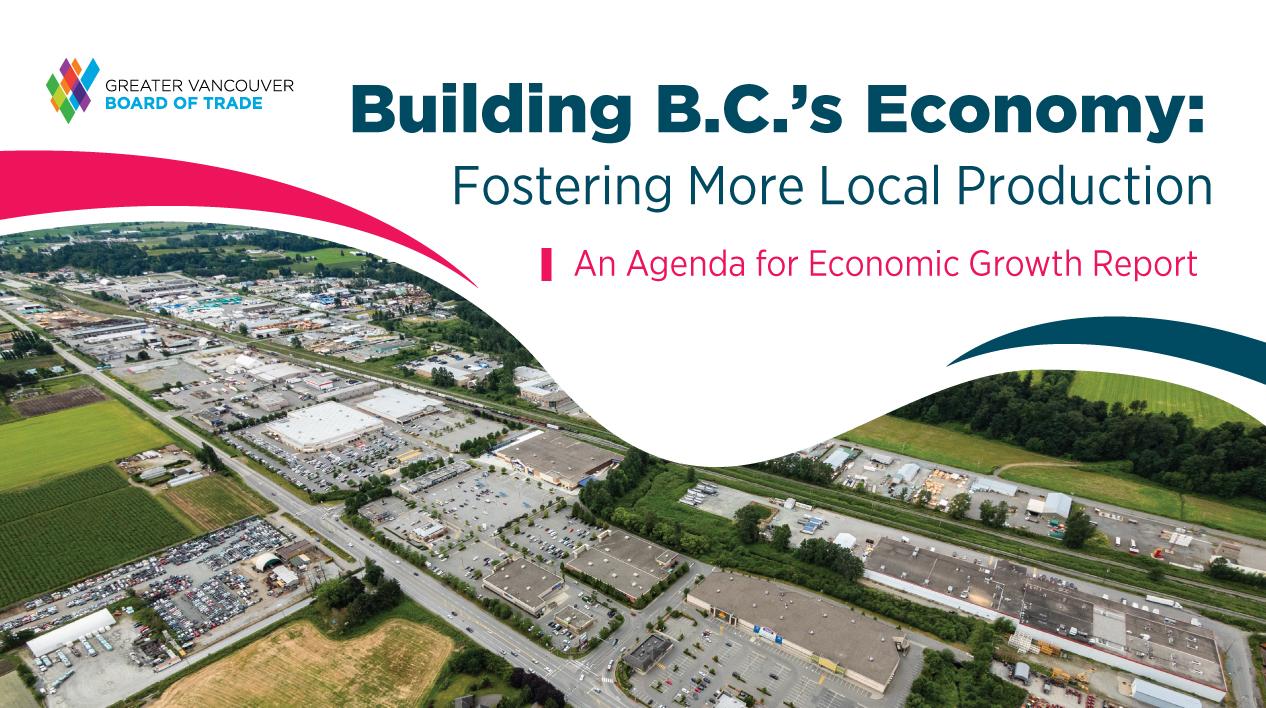OUR POLICY WORK
Since 1887, the Greater Vancouver Board of Trade has played a pivotal role in building, developing, and promoting the city and of Vancouver and its surrounding region. We believe that the most effective way to ensure better outcomes for the people of Vancouver is through a dynamic and competitive economy. a strong private sector fosters innovation, productivity, and prosperity for all. A vibrant economy also serves as the foundation for sustainable services that enhance our communities and increase equity and well-being. We convene, collaborate, and advocate for our members across all sectors of the economy in a non-partisan, fact-based, and constructive manner. Our work is anchored in our purpose which is to lead, unite, and champion business to ensure Greater Vancouver is thriving and our region is the best place to live and work.
Reports and Advocacy Initiatives
Based on the recommendations of our expert committees, we publish comprehensive reports and develop election dashboards to illuminate both the obstacles and opportunities within our region.
Annual Policy Forums
Each year we host policy forums on a range of topics. If you are interested in sponsoring a forum, please contact us...
Economic Outlook Forum
A timely look at the year ahead. We gather some of the country's top financial minds and ask them to share their economic forecasts and predictions for Greater Vancouver, British Columbia, and Canada. Join us on Thursday, January 29, 2026
Energy Forum
A big-picture conversation on how B.C. and Canada are positioned in global energy markets. Join us on Thursday, February 19, 2026
Health Care Forum
Industry experts, government officials, and business leaders discuss opportunities for improvement and efficiencies in how health care is managed in B.C.
Indigenous Opportunities Forum
An exploration of the critical relationship between Indigenous communities and economic development in B.C.
Major Projects Forum
Bringing together the businesses and thought leaders who are planning and executing transformational projects across our region, including the critical infrastructure needed to support our booming population.
Transportation Forum
Convening the business community to discuss the future of our region's transit and transportation networks, and the decisions that will guide our economic growth for the next 25 years and beyond.
Policy Committees
Our unique public policy committee structure balances the priorities of our members with the strategic direction set out by our Board of Directors, Policy Council, and management team.

Policy Council
The Policy Council oversees all of our policy developments and advocacy initiatives, to ensure they align with our organization's mission, purpose, and vision for Greater Vancouver's economy. The Policy Council serves at the direction of our Board of Directors and is supported by our management team.
- Susannah Pierce
- Corporate Director

Regional Transportation and Infrastructure Committee
Composed of regional transportation stakeholders, the committee monitors, studies and advocates for policies concerning the movement of goods, people, and services in our region. Areas of focus include technology and innovation, sustainability and clean technology, ongoing infrastructure projects in the region, all modes of transportation (rail, air, port, highways, etc.) and supporting Canada's supply chains.
- Peta Wolmarans
- Director, Planning, Vancouver International Airport
- Rob MacKay-Dunn
- Vice-President, Government and Public Affairs, British Columbia Maritime Employers Association

Economic Development and Fiscal Committee
Our Economic Development and Fiscal Committee focuses on making the region more competitive and prosperous. They consider fiscal and general economic issues at all levels of government affecting the Greater Vancouver business community. Comprising GVBOT members with expertise and a strong interest in economic growth, the committee provides advice and input on various issues and government budgets, helping to shape GVBOT's policy positions on fiscal measures that promote economic growth, shared prosperity, reduced red tape and tax burden while addressing the cost of doing business.
- Susan Mowbray
- Partner, Economics and Research, MNP
- Brendon Ogmundson
- Chief Economist, BC Real Estate Association

Regional and Civic Affairs Committee
Our Regional and Civic Affairs Committee has a broad focus on all municipal issues impacting businesses in the Greater Vancouver region. Composed of GVBOT members from a range of sectors, this committee monitors and influences policies and projects in Greater Vancouver. Its scope of study includes housing, arts and culture, building development, poverty, health, regional governments, and community issues. The committee regularly hears updates on major projects and community planning initiatives underway in the region.
- Andrew Ramlo
- VP advisory, rennie
- Erin Seeley
- CEO, YWCA Metro Vancouver
- Karen Soyka
- VP, Strategy & Business Development, Destination Vancouver



